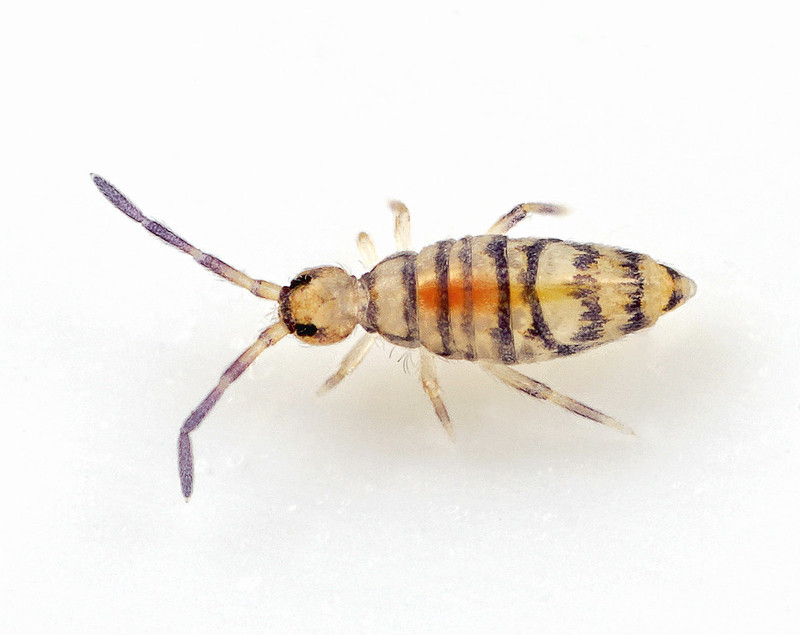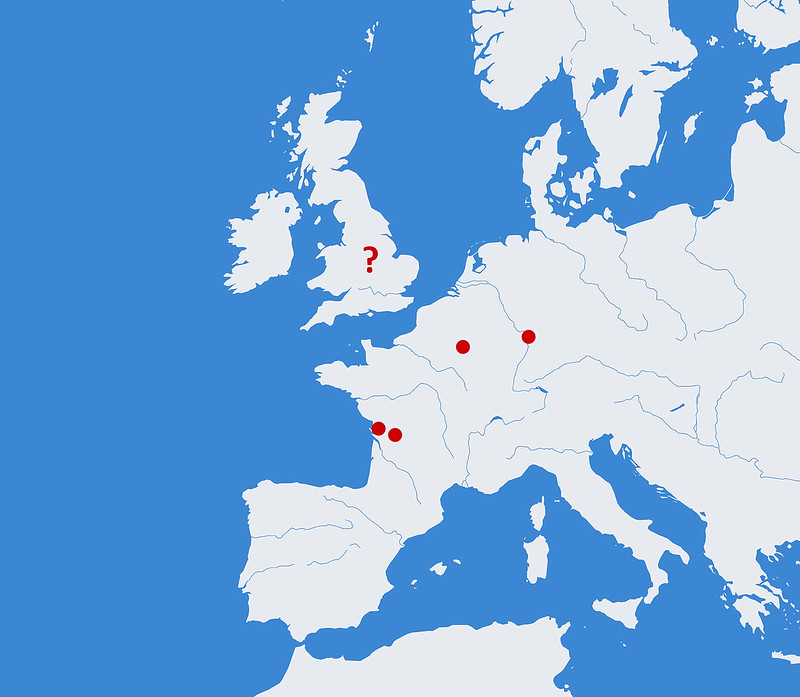

Identification of Entomobrya is based on dorsal pigmentation patterns, and this has been shown to be generally reliable for UK species, although there is some variation from juvenile stages to adult forms, and the occasional worn specimen can be rather pale and difficult to determine. This one seems to be an adult female Entomobrya nigrocincta, and that's where the problem lies. There are currently no UK records for this species. Male E. nigrocincta are unmistakable - ginger with a wide dark transverse band, but females to look similar to E. multifasciata except that the band on abd5 is split into two spots (continuous in multifasciata and th2 is paler than the other segments. I think this is E. nigrocincta but the possibility remains that it could be a variant E. multifasciata. There are two solutions to this problem, DNA barcoding, which is beyond my means - or find a male! I've been back to resample twice so far and have not been able to find any more specimens, male or female. The Ivy bush continues to produce large numbers of Entomobrya intermedia but I have not found and Entomobrya multifasciata there, although they are present elsewhere in the Garden. I'm convinced to that this is Entomobrya nigrocincta but I can't prove it, which is fascinating and frustrating.
So what's going on? Originally from the Canary Isles, Entomobrya nigrocincta has been turning up across Europe over the last decade (GBIF data):

This is a Mediterranean species which is moving north. The Leicester Botanical Garden has a large collection of Mediterranean plants so it's not hard to guess how this species arrived. It's not the only springtail which is headed our way - Entomobrya unostrigata is also coming. As we lose montane species as the mountain tops get too warm for them and they run out of altitude we gain species adapter to warmer climates. It's all change in the springtail world - but then, it always has been, with species moving north and south in response to warmer and cooler climate interludes.
My thanks to Peter Shaw for his help with this specimen.
No comments:
Post a Comment
Comments welcome, I will respond as soon as I can.
Note: only a member of this blog may post a comment.